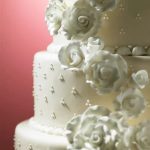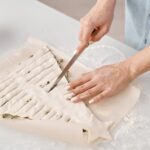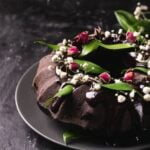When it comes to cake decorating, the possibilities are endless. But have you ever wondered if you can decorate a frozen cake? In this article, we will explore the world of decorating frozen cakes and discover the benefits that come along with it.
Decorating a frozen cake might seem like an unusual idea, but it is actually a game-changer for many bakers and decorators. Freezing a cake before decoration can offer several advantages, such as extended time frames for creativity and ease of handling. Whether you are preparing for a special occasion or simply want to elevate your baking skills, decorating a frozen cake opens up exciting opportunities in the realm of confectionery art.
In this introductory section, we aim to pique your curiosity and interest in exploring the possibilities of decorating a frozen cake. We will provide an overview of the topic, debunk common misconceptions surrounding freezing cakes, and share expert opinions and experiences that shed light on this innovative approach to cake decoration. So get ready to dive into the realm of frozen cake decorating and unlock your culinary potential in ways you never thought possible.
Understanding the Basics
One of the most common misconceptions surrounding frozen cakes is that they cannot be decorated. Many people believe that once a cake has been frozen, it becomes too firm and difficult to work with. However, this could not be further from the truth. In fact, decorating a frozen cake can have numerous benefits and can result in a beautifully decorated masterpiece.
Examining the Myth
The belief that frozen cakes cannot be decorated stems from the misconception that freezing alters the texture and quality of the cake. While it is true that freezing can cause some moisture loss, proper techniques can help maintain the cake’s moisture and delicious taste. Additionally, freezing actually helps to firm up the cake, making it easier to handle and less prone to crumbling.
Debunking Common Misconceptions
Another common misconception about decorating frozen cakes is that the frosting will not adhere properly. The reality is that frosting can adhere just as well to a frozen cake as it does to a fresh one. In fact, many professional bakers prefer working with frozen cakes because they are more stable and less likely to crumble or break during decoration.
Expert Opinions and Experiences
Numerous expert bakers have successfully decorated frozen cakes for various occasions, including weddings and birthdays. They attest to the fact that freezing a cake before decoration not only allows for better control over the process but also extends the time available for intricate designs and details. By understanding these basics and debunking common misconceptions, you can confidently move on to preparing your frozen cake for decoration.
Overall, understanding that you can indeed decorate a frozen cake opens up new possibilities in terms of creativity and design choice. Rather than limiting yourself to only decorating fresh cakes, consider trying your hand at decorative techniques on a frozen canvas. With proper preparation and technique, you will be able to create stunningly beautiful cakes while enjoying numerous advantages in terms of cake stability and extended decoration time.
Preparing the Cake
Freezing and thawing a cake properly is crucial when it comes to decorating a frozen cake. This section will provide some tips and tricks for preparing the cake before the decoration process begins.
Freezing the Cake
Before freezing the cake, it is important to ensure that it is fully cooled. A warm or slightly warm cake can release moisture during the freezing process, resulting in a soggy texture. Once cooled, wrap the cake tightly in plastic wrap or place it in an airtight container to prevent any air from reaching it.
To maintain freshness and structural integrity, freeze the cake as soon as possible after it has cooled down. If you plan to decorate the cake at a later date, it is recommended to freeze it without any frosting or decorations. However, if you want to freeze a fully decorated cake, make sure that all layers are well-set and secure.
Thawing the Cake
Thawing a frozen cake properly is equally important as freezing it correctly. The best way to thaw a frozen cake is by transferring it from the freezer to the refrigerator 24 hours before you plan on decorating it. This slow thawing method allows the cake to gradually come back to its original texture without introducing any excess moisture.
While thawing in the refrigerator is generally preferred, if you need to speed up the process, you can also thaw a frozen cake at room temperature. Place the wrapped or boxed frozen cake on your kitchen counter and let it sit for about 2-4 hours until completely thawed. Remember not to unwrap or remove any plastic wrap until after the thawing process is complete.
It’s important to note that once a frozen cake is fully thawed, do not refreeze it as this can negatively impact its texture and taste. Therefore, plan accordingly and only freeze cakes that are ready for decoration or consumption.
By following these tips for freezing and thawing a cake, you can ensure that your frozen cake remains moist and delicious for the decoration process. The next section will provide a detailed step-by-step tutorial on how to decorate a frozen cake, so keep reading to learn more.
How to Decorate a Frozen Cake
Decorating a frozen cake can be a fun and creative way to add a unique touch to your dessert. Contrary to popular belief, it is indeed possible to decorate a cake that has been frozen. In fact, freezing the cake can even make the decorating process easier and more convenient. In this step-by-step tutorial, we will guide you through the process of decorating a frozen cake.
Step 1: Thaw the Cake Properly
Before you start decorating, it’s crucial to properly thaw your frozen cake. This will ensure that the texture and taste are not compromised. The best method for thawing a frozen cake is to transfer it from the freezer to the refrigerator overnight. This slow thawing process allows the cake to retain its moisture and prevents it from becoming soggy.
Step 2: Prepare Your Tools and Materials
While your cake is thawing, gather all the necessary tools and materials for decoration. This includes various frosting tips, piping bags, food coloring, edible decorations, and any other decorative elements you plan on using. It’s essential to have everything organized and easily accessible before you start decorating.
Step 3: Crumb Coat the Cake
Once your cake has completely thawed, it’s time to crumb coat it. A crumb coat is a thin layer of icing that helps seal in any loose crumbs on the cake’s surface. Spread a thin layer of frosting over the entire cake using an offset spatula or a butter knife. This initial layer doesn’t need to be perfect; its purpose is just to create a smooth surface for your final layer of decoration.
Step 4: Add Your Final Decorations
After applying the crumb coat, let it set for a few minutes before moving on to adding your final decorations. Now comes the fun part – you can get as creative as you want. Use different frosting techniques like piping, spreading with an offset spatula, or creating patterns with a cake comb.
Add color and depth to your design by using food coloring or edible paints. Don’t forget to incorporate fun and edible decorations like sprinkles, fondant accents, or even fresh flowers.
Remember, the beauty of decorating a frozen cake is that it allows you more time for intricate designs and details as the cake remains firm and doesn’t crumble easily. Take your time and enjoy the process of bringing your vision to life.
Decorating a frozen cake may seem daunting at first, but with practice and experimentation, you’ll soon become an expert in creating stunning frozen cake masterpieces. With the right techniques, tools, and materials, there is no limit to what you can achieve when decorating a frozen cake. So go ahead, unleash your creativity, and have fun as you transform a simple frozen cake into a work of art.
Benefits of Decorating a Frozen Cake
Decorating a frozen cake has numerous benefits that make it an appealing option for anyone looking to create a stunning and delicious dessert. Here are some of the advantages of decorating a frozen cake:
- Longer time frame for decoration and creativity: When you decorate a frozen cake, you have the advantage of working at your own pace. Freezing the cake allows you to extend the timeframe for decoration, as there is no rush to complete the process before the cake becomes stale or dries out. This extra time gives you the opportunity to experiment with different techniques, designs, and decorations, resulting in a more elaborate and visually appealing final product.
- Ease of handling and manipulation: Decorating a frozen cake offers greater convenience and control over your creation. The firmness of the frozen cake makes it easier to handle, carve, and shape according to your desired design.
You can achieve cleaner lines and sharper edges when working with a frozen cake compared to one that is thawed or fresh out of the oven. Additionally, freezing reduces the risk of crumbling or breaking as you apply different layers of frosting or decorative elements. - Preservation of moisture and freshness: One major benefit of decorating a frozen cake is that it helps maintain its moisture and freshness throughout the entire process. Freezing locks in moisture within the layers, preventing them from drying out during decoration. Thawing the cake after decoration also allows time for all flavors to meld together, resulting in a moist and flavorful dessert that will impress your guests.
To fully enjoy these benefits while decorating a frozen cake, it is important to properly freeze and thaw your cake before beginning any decoration process. Stay tuned for our next section where we will provide tips and tricks for ensuring your cakes freeze well without sacrificing taste or texture.
Advanced Decorating Techniques for Frozen Cakes
When it comes to decorating frozen cakes, the possibilities are endless. With the right techniques and tools, you can create intricate details, textures, and designs that will truly impress your guests. In this section, we will explore some advanced decorating techniques that will take your frozen cake to the next level.
One technique that works particularly well with frozen cakes is using a piping bag with different types of frosting. The cold temperature of the cake helps to keep the frosting firm and in place as you pipe intricate designs. You can create beautiful borders, flowers, or even write personalized messages using this method. Experiment with different piping tips to achieve various effects and add more dimension to your cake.
Another advanced technique is adding edible decorations such as sugar flowers or chocolate sculptures to your frozen cake. These decorations can be made in advance and stored in the freezer until you’re ready to use them. When adding these decorations to a frozen cake, be sure to gently press them into the surface so they adhere properly.
If you’re looking for a more unique and eye-catching design, consider using fondant or modeling chocolate to cover your frozen cake. These pliable materials can be shaped into any desired form and then draped over the cake for a smooth finish. With fondant or modeling chocolate, you have the opportunity to create sculpted shapes, intricate patterns or even replicate famous landmarks on your cake.
In addition to these techniques, it’s important to keep in mind that certain types of frosting work better with frozen cakes than others. Buttercream frostings tend to hold up well when working with a frozen cake due to their stability at low temperatures. Cream cheese frostings or whipped cream frostings may require additional stabilization methods such as adding gelatin or powdered sugar.
By utilizing these advanced decorating techniques for frozen cakes, you can create show-stopping designs that are sure to impress everyone who sees them. Don’t be afraid to experiment and let your creativity run wild. With a little practice and patience, you’ll be able to achieve professional-looking results that will leave your guests in awe.
| Advanced Technique | Description |
|---|---|
| Piping with Different Frostings | Use a piping bag with different types of frosting to create intricate designs, borders, and personalized messages. |
| Edible Decorations | Add sugar flowers or chocolate sculptures to the frozen cake for added visual appeal. Press gently so they adhere properly. |
| Fondant or Modeling Chocolate | Drape fondant or modeling chocolate over the frozen cake for a smooth finish and the ability to create unique sculpted shapes and intricate patterns. |
| Frosting Compatibility | Select frostings such as buttercream which hold up well in low temperatures. Consider stabilizing other frostings like cream cheese or whipped cream with gelatin or powdered sugar. |
Troubleshooting and Common Challenges
Decorating a frozen cake can be a fun and rewarding experience, but it’s not without its challenges. In this section, we will address some common issues that you may encounter when decorating a frozen cake and provide solutions and tips to help you overcome them.
One common challenge when working with a frozen cake is frosting consistency. Since the cake is cold, the frosting can harden quickly, making it difficult to spread smoothly. To combat this issue, it’s important to let your frosting come to room temperature before decorating.
This will make it easier to work with and ensure a more even application. If your frosting becomes too soft while you are working with it, you can place it in the refrigerator for a few minutes to firm up.
Another challenge that you may face is cracking or crumbling of the frozen cake during the decorating process. Freezing can sometimes cause moisture loss in cakes, resulting in a drier texture. To prevent this from happening, make sure that your cake is properly wrapped in plastic wrap or placed in an airtight container before freezing. Additionally, be gentle when handling the frozen cake and use a serrated knife to trim any uneven surfaces before applying frosting or decorations.
Lastly, transportation can be tricky when working with a decorated frozen cake. The cake needs to be fully thawed before serving, but transporting it while thawing can lead to smudging or smearing of decorations. To avoid this, plan ahead and allow ample time for the cake to thaw completely at its final destination. You can also consider refrigerating the decorated thawed cake for a short period of time before serving to help set any delicate decorations.
| Challenge | Solution |
|---|---|
| Frosting consistency | Let frosting come to room temperature before decorating. Refrigerate frosting if it becomes too soft. |
| Cracking or crumbling of cake | Ensure proper storage and handling of the frozen cake. Use a serrated knife to trim uneven surfaces. |
| Transportation while thawing | Plan ahead and allow ample time for the cake to thaw completely at its final destination. Consider refrigerating the decorated thawed cake briefly before serving. |
Showcasing Success Stories
One of the best ways to inspire and ignite your creativity when it comes to decorating a frozen cake is by exploring stunning examples of success stories. These cakes not only showcase the incredible possibilities that come with decorating a frozen cake but also provide you with visual inspiration for your own creations.
When it comes to decorating a frozen cake, the options are truly endless. From elegant wedding cakes to whimsical birthday creations, there is a decorated frozen cake for every occasion and theme. By studying successful examples, you can learn different techniques, color combinations, and design elements that work well with frozen cakes.
Imagine a winter wonderland-themed cake adorned with delicate snowflakes made from royal icing. Or perhaps you draw inspiration from nature and create a garden-inspired cake featuring intricate sugar flowers and vibrant edible butterflies. The beauty of decorating a frozen cake is that it allows you to experiment with unique designs without worrying about the freshness of the cake itself.
If you’re looking for bold and eye-catching designs, consider exploring themed cakes such as superheroes, unicorns, or sports-related creations. These types of cakes often require intricate detailing and extensive use of fondant or gum paste, making them perfect for freezing prior to decoration. Take inspiration from skilled bakers who have mastered the art of creating highly detailed figures and characters that truly bring their designs to life.
No matter what your personal style or the occasion may be, these success stories will leave you in awe and eager to try your own hand at decorating a frozen cake. Remember to let your imagination run wild.
After all, transforming a plain frozen cake into an edible work of art is both satisfying and rewarding. Whether you’re just starting out or have years of experience under your belt, there’s always room for creativity when it comes to decorating a beautifully frosted masterpiece on a chilled canvas.
Conclusion
Decorating a frozen cake may seem like a daunting task at first, but as we have explored in this article, it is not only possible but also offers numerous benefits. By freezing a cake before decorating it, you are giving yourself more time and freedom to create intricate designs and experiment with different techniques. The process of freezing and thawing a cake can also help retain moisture, resulting in a delicious and moist final product.
Throughout this article, we have debunked common myths and misconceptions surrounding the idea of decorating a frozen cake. Expert opinions and experiences have shown us that freezing a cake does not hinder the decorating process; instead, it can enhance it. Properly freezing and thawing the cake ensures that it remains structurally sound while also making it easier to handle and manipulate during decoration.
We have provided step-by-step instructions on how to decorate a frozen cake, from choosing the right tools and materials to showcasing various techniques and styles of decoration. Going beyond the basics, we have discussed advanced techniques for adding intricate details, textures, and designs to your frozen cakes. Additionally, we have addressed common challenges that may arise during the process and provided troubleshooting tips to ensure your success.
In conclusion, we encourage you to unleash your creativity and let your imagination run wild when decorating a frozen cake. The benefits of freeze-decorating are numerous – you have more time for creativity, ease of handling while frozen, and a moist end result. By following the tips and techniques outlined in this article, you can confidently embark on your own journey of creating stunningly decorated frozen cakes. So go ahead – freeze that cake and let your artistic abilities shine.
Frequently Asked Questions
Is it OK to decorate a frozen cake?
It is generally not recommended to decorate a frozen cake. When a cake is frozen, the moisture within it turns into ice crystals, which can affect the texture and stability of the cake.
Attempting to decorate a frozen cake can cause the frosting to crack or slide off, resulting in an uneven and messy appearance. It is best to thaw the cake fully before decorating to ensure that the frosting adheres properly and maintains its intended design.
Can I frost and decorate a frozen cake?
While it is technically possible to frost and decorate a frozen cake, it is not ideal for achieving optimal results. As mentioned earlier, freezing can alter the texture of the cake and make it more difficult for the frosting to adhere properly.
Additionally, as you frost a frozen cake, there is a risk of damaging its surface due to the hardness of the icing spreading over brittle frozen layers. It is highly recommended to allow your cake to fully defrost before adding layers of frosting and decorations for better visual appeal and ease of application.
Should you defrost cake before decorating?
Yes, it is important to defrost a cake before decorating it. Thawing allows the cake to return to its original texture, making it easier to work with when applying frosting or other decorative elements.
Defrosting also ensures that the flavors are fully developed, as freezing can sometimes affect taste as well. By allowing your cake sufficient time to defrost before adding any decorations, you create an optimal canvas for your creativity while ensuring better taste and presentation for your final product

Welcome to my blog about home and family. This blog is a place where I will share my thoughts, ideas, and experiences related to these important topics. I am a stay-at-home mom with two young children. I hope you enjoy reading it! and may find some helpful tips and ideas that will make your home and family life even better!





